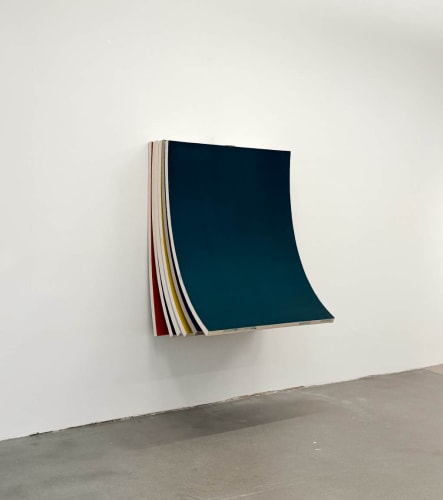New York, NY - C24 Gallery presents Traces featuring works by Vidal Mouet, Leda Tsoutreli, and Elise Coker. Grounded in the traditional elements of painting: space, line, color, and surface; the exhibition delves into the dialogue between object and representation.
Vidal Mouet treats each painting as a body, one that must locate itself in the room. The front, back, and edge matter equally as shaped and modular supports become the answers to thresholds and joints. Ordinary forms like stacked cups, sheets of cardboard, and the circle of a ceiling speaker are translated into new forms explored through the rectangle of a canvas. The works respond to their surroundings and architectural forms even as they establish their own physicality. They hold space for both representational references and new uncovered objects.
Leda Tsoutreli engages with traditional visual techniques while contemporizing line work. As marks veer and double back; depleting the brush's load, the process becomes tangible and the work is revealed. The spent line continues and unravels across the canvas, challenging the boundaries of mark-making and revealing unexpected spaces. Her paintings show how a line can build a field, disrupt it, and remake it again as she challenges the limitations of the canvas to fully explore the depth of an image.
Elise Coker turns to the infrastructures that organize daily life: industry, transport, technology - using them to measure humanities impact on the natural world. Often in dialogue with her documentary practice, each work is anchored to a specific site and story. Working in acrylic on canvas and metal, she withholds detail to heighten the impression of presence; humanity is absent, yet our effects remain.
Taken together, the exhibition affirms painting's capacity to perpetuate emotion without overt depiction, and to assert itself as an object capable of reorganizing space and attention. Mouet's architecturally‑aware pieces underscore the construction of conventional objects; Tsoutreli's canvases extend sightlines and invite close reading of mark‑making; Coker's serial groupings map environmental and civic systems across materials. The installation emphasizes the junctures between these tangential fields: tracing forms, boundaries, and the liminal spaces between construction and degradation.



